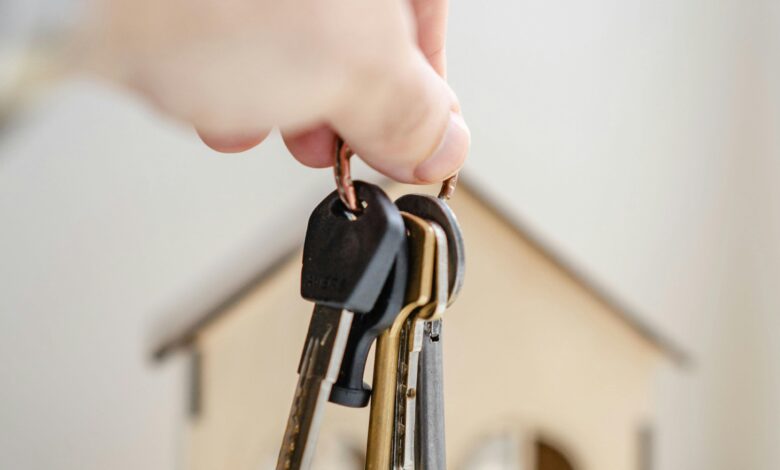How to Improve Your Home’s Energy Efficiency

Improving your home’s energy efficiency is one of the most effective ways to reduce utility bills, minimize your carbon footprint, and create a more comfortable living environment. Whether you’re looking to make small changes or undertake larger renovations, there are numerous strategies to enhance your home’s energy performance.
In this guide, we’ll explore practical steps to improve energy efficiency, from simple DIY fixes to more significant investments, ensuring your home is both eco-friendly and cost-effective.
Step 1: Conduct an Energy Audit
Before making any improvements, it’s essential to identify where your home is losing energy. An energy audit evaluates your home’s energy use and pinpoints areas for improvement.
Options for Energy Audits:
- DIY Audit : Use online tools or checklists to assess insulation, windows, appliances, and lighting.
- Professional Audit : Hire a certified energy auditor who can conduct tests like a blower door test or thermal imaging to detect air leaks and insulation gaps.
The results will help you prioritize upgrades that deliver the most significant impact.
Step 2: Seal Air Leaks
Air leaks around doors, windows, and other openings waste energy by letting conditioned air escape and allowing drafts to enter. Sealing these gaps is one of the easiest and most cost-effective ways to improve energy efficiency.
Tips for Sealing Air Leaks:
- Weatherstripping : Apply weatherstripping to doors and operable windows to prevent drafts.
- Caulking : Seal cracks around window frames, baseboards, and electrical outlets.
- Door Sweeps : Install door sweeps at the bottom of exterior doors to block drafts.
- Foam Gaskets : Place foam gaskets behind outlet and switch plates on exterior walls.
By sealing leaks, you can reduce heating and cooling costs significantly.
Step 3: Upgrade Insulation
Proper insulation is critical for maintaining consistent indoor temperatures and reducing energy loss. If your home has outdated or insufficient insulation, upgrading it can make a noticeable difference.
Key Areas to Insulate:
- Attic : The attic is often the biggest source of heat loss. Add fiberglass, cellulose, or spray foam insulation.
- Walls : Consider blown-in insulation for existing walls or batts for new construction.
- Basement/Crawl Spaces : Insulate foundation walls and floors to prevent cold air infiltration.
- Floors : Insulate under floors above unheated spaces like garages.
Check the recommended R-values (insulation effectiveness) for your region to ensure optimal performance.
Step 4: Upgrade Windows and Doors
Old, single-pane windows and poorly insulated doors can lead to significant energy loss. Upgrading to energy-efficient models can improve comfort and lower utility bills.
Energy-Efficient Window Features:
- Double or Triple Glazing : Multiple glass layers with insulating gas between them.
- Low-Emissivity (Low-E) Coatings : Reflect infrared light to keep heat inside during winter and outside during summer.
- Insulated Frames : Vinyl or fiberglass frames provide better insulation than aluminum.
If replacing windows isn’t feasible, consider adding storm windows or applying window film to improve efficiency.
Step 5: Optimize Heating and Cooling Systems
Your HVAC system accounts for a large portion of your energy consumption. Ensuring it operates efficiently is crucial for saving energy.
Tips for HVAC Efficiency:
- Regular Maintenance : Schedule annual tune-ups for your furnace, air conditioner, and ductwork.
- Replace Filters : Change HVAC filters every 1-3 months to maintain airflow and efficiency.
- Programmable Thermostats : Install a smart thermostat to automatically adjust temperatures based on your schedule.
- Duct Sealing : Seal and insulate ducts to prevent air leaks in attics, basements, and crawl spaces.
If your system is over 15 years old, consider upgrading to a high-efficiency model with an ENERGY STAR rating.
Step 6: Switch to Energy-Efficient Lighting
Lighting consumes a significant amount of electricity, but switching to energy-efficient options can cut costs dramatically.
Lighting Solutions:
- LED Bulbs : Replace incandescent bulbs with LEDs, which use up to 75% less energy and last longer.
- Motion Sensors : Install motion-activated lights in low-traffic areas to avoid unnecessary usage.
- Dimmer Switches : Use dimmers to control brightness and reduce energy consumption.
Additionally, maximize natural light by using light-colored curtains and strategically placing mirrors.
Step 7: Invest in Energy-Efficient Appliances
Older appliances can be energy hogs. When it’s time to replace them, choose ENERGY STAR-certified models, which meet strict efficiency guidelines set by the U.S. Environmental Protection Agency.
Key Appliances to Upgrade:
- Refrigerators
- Washing Machines and Dryers
- Dishwashers
- Water Heaters
Even small changes, like using a clothesline instead of a dryer, can save energy.
Step 8: Reduce Water Usage
Heating water accounts for about 18% of home energy use. Reducing water consumption and improving water heating efficiency can yield significant savings.
Strategies for Water Efficiency:
- Low-Flow Fixtures : Install low-flow showerheads and faucets to reduce hot water usage.
- Tankless Water Heaters : Switch to tankless or heat pump water heaters for on-demand heating.
- Insulate Pipes : Wrap hot water pipes with foam insulation to prevent heat loss.
- Fix Leaks : Repair dripping faucets and running toilets promptly.
Step 9: Harness Renewable Energy
For long-term savings and sustainability, consider renewable energy solutions like solar panels or wind turbines. While the upfront cost can be high, incentives and tax credits often offset expenses.
Benefits of Solar Panels:
- Generate clean electricity.
- Lower or eliminate electric bills.
- Increase property value.
Many regions offer net metering programs, allowing you to sell excess energy back to the grid.
Step 10: Adopt Smart Home Technology
Smart home devices can optimize energy use by automating tasks and providing real-time data.
Examples of Smart Devices:
- Smart Thermostats : Learn your habits and adjust settings accordingly.
- Smart Plugs : Monitor and control energy usage for individual appliances.
- Energy Monitors : Track electricity consumption room-by-room to identify inefficiencies.
These technologies empower you to make informed decisions about energy use.
Step 11: Maintain Landscaping for Efficiency
Your yard can also play a role in improving energy efficiency.
Landscaping Tips:
- Plant Shade Trees : Deciduous trees on the south and west sides of your home provide shade in summer and allow sunlight in winter.
- Windbreaks : Evergreen trees or shrubs block cold winds in winter.
- Reflective Roofs : Use light-colored roofing materials to reflect sunlight and reduce cooling needs.



